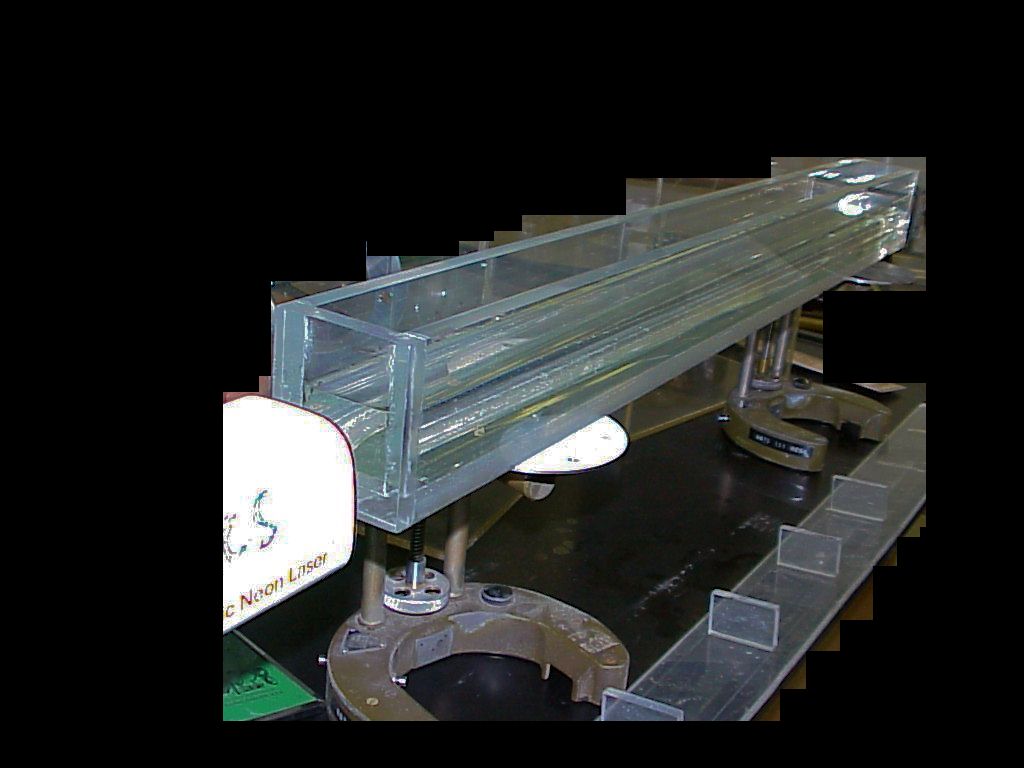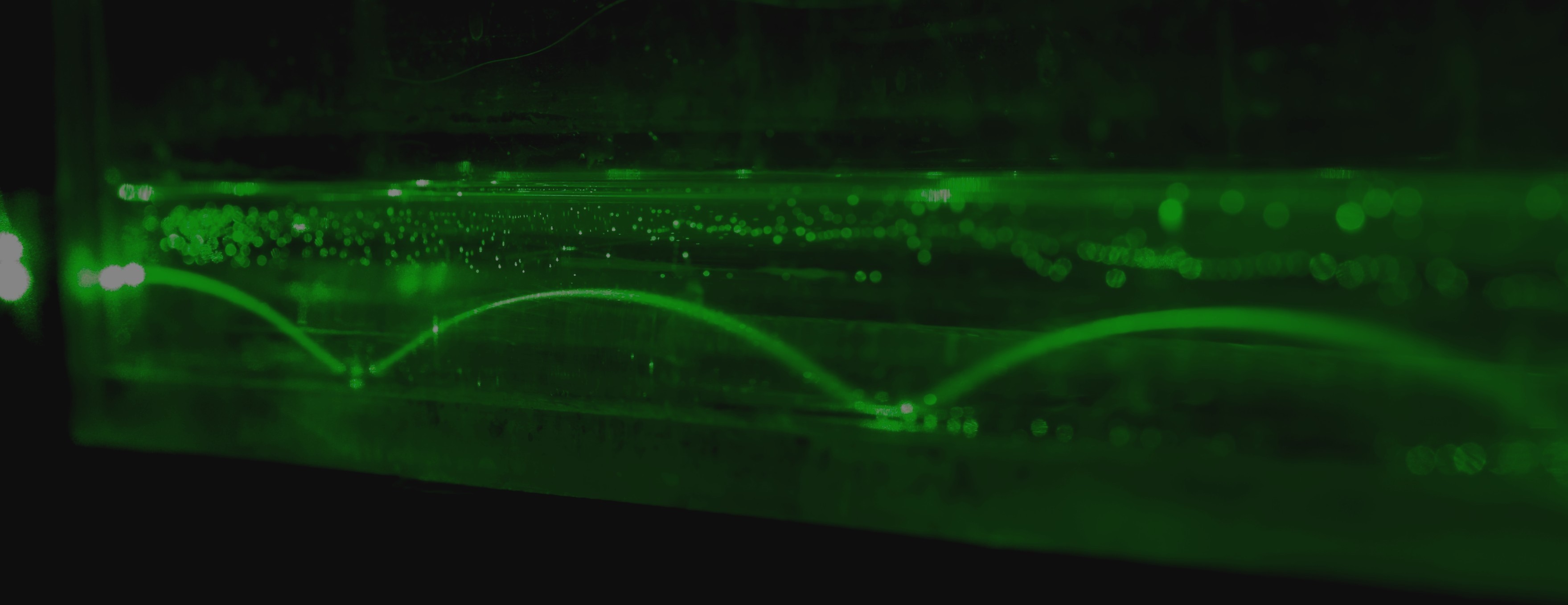Physics Demo Number: 091 |
Approximate Run Time: 15 min |
|
Bouncing Laser Beam Trough |
||
Demo DescriptionOne compels laser light to follow a continuously curving path (rather than straight line paths) through a medium, by establishing a vertical mass density gradient and corresponding refractive index gradient in the medium. A mirror on the bottom of the tank causes the beam to become a series of curved loops separated by bright spots on the mirror. The gradient (syrup and water) needs a 12 hour set up time. |
||
Scientific Principles
|
|
|
Equipment & Set Up
|
||
Equipment Location
|
||
InstructionsThe Photo shows the long plastic trough sitting on two precision lab jacks with its anti-slosh wave-dampening top laying in front. One pours 2 pints of Karo light corn syrup (with No Vanilla extract) in the bottom of the container, followed by two pints of water on top of the syrup. Over a period of about 12 hours (cannot set this up on spur-of-the moment), the fluid will build up a vertical mass density gradient and corresponding refractive index gradient. This gradient of refractive index will be of such a structure that a horizontal beam from the 5mW laser will follow a downwardly-curving path, instead of a straight line, if the beam is inserted at an appropriate level into the solution through a vertical end face of the trough. The trough has a long strip of mirror laying on its inside bottom, so that once the downwardly curving beam strikes the bottom mirror, the beam will be reflected in an upwards direction. However the refractive index gradient will keep the beam always curving downwards so that we see a series of curved loops separated by bright spots on the mirror as the locus of the laser beam in going from one end to the other. The situation is very much like a ball bouncing along in parabolic arcs off a horizontal elastic surface in the earth's gravitational field. Note one may also use the trough with clear water and a white light source. Calling the white light beam sunlight, and adding a pinch or two of Ivory Snow powdered soap to the water simulates side scattering of blue light and red sunsets quite nicely for the atmosphere. The next picture depicts the bouncing laser beam in action with the help of an advanced lab 5 mW green laser.
|
||
Writeup created by David A. BurbaCopyright © 2013, Vanderbilt University. All Rights Reserved.
|
||

